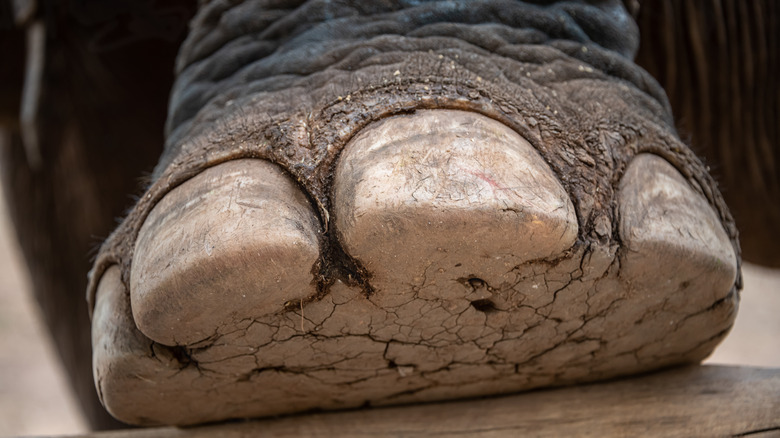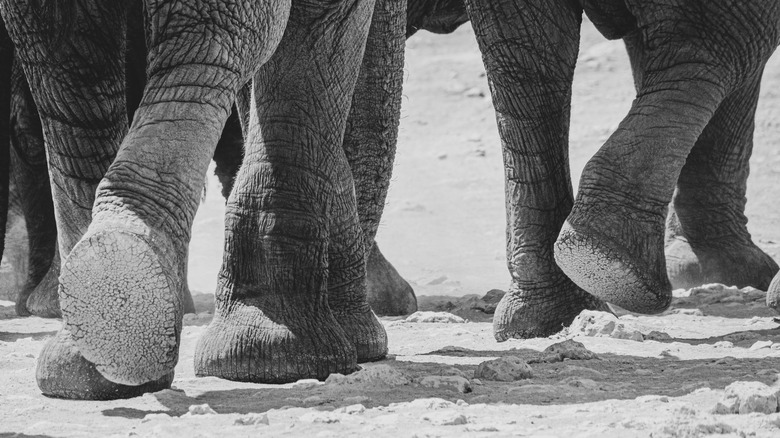Elephants Use Their Feet In An Unexpected Way
Elephants are one of the most iconic animals on the planet. They are also one of the largest and most intelligent, notorious for having amazing memories and the ability to pass knowledge of food and water sources down through generations, as Treehugger explains. They display behaviors of emotional intelligence such as taking care of young or injured members of their herd. Elephants are also self-aware, which means they can recognize themselves in mirrors as humans and apes do. They even seem to recognize elephant remains. What makes them all the more intriguing, however, is their multitude of biological survival mechanisms.
The elephant's trunk, ears, and tusks (found on male Asian elephants and on both male and female African elephants) are perhaps the most stand-out features of an elephant. Each of these body parts are unique to all subspecies of elephant, but there is more to an elephant's day-to-day behavioral patterns with regard to their anatomy.
Elephants can communicate with vibrations
An elephant's feet not only carry its massive body weight – anywhere from 5,000 to 14,000 pounds — across miles of terrain, but their feet also allow them to communicate through sound. Caitlin O'Connell-Rodwell began studying sound communication between elephants in 1997. She found that elephants create low-frequency sounds that rumble through the ground. These rumbles are felt through an elephant's feet. When combining the vibrations they feel with audible sounds, elephants can figure out the direction from which a message is coming. Elephants display physical behaviors when "listening" with their feet as well. They may lift a foot or a toe when hearing an unfamiliar sound. Perhaps this can be likened to a dog tilting its head or a rabbit turning its ears.
Elephants communicate to other elephants close by, but also to elephants far away. Feeling the rumbles through their feet can alert them to danger. Sometimes these messages can be coming from miles away (per Treehugger).
Elephant footprints affect the land around them
An elephant's feet are not only key to its survival, but also the survival of other species. Every animal serves a purpose here on earth and inhabitants of all ecosystems intertwine with others. An animal that large must leave an impressive footprint. According to New Scientist, footprints from African elephants that live in swampy areas, like Uganda, can fill with water and harbor life for small but diverse aquatic life forms. Some of these footprints can sink together and hold around 200 liters of water. Frogs have found breeding grounds for their eggs and tadpoles in Asian elephant footprints as well (per National Geographic).
Despite the elephant's popularity in movies and on clothing items, populations across Africa and Asia are quickly dropping. Elephants are killed for their tusks, which are made of ivory, and sold for outrageous amounts of money. The expansion of humans into elephant habitats is also contributing to their decline. World Wildlife Fund reported a near 50% decrease in African elephant numbers in East Africa over the past 25 years and even more concerning drops for Asian elephants. Armed land rangers work tirelessly to protect these animals and advocacy groups continue to urge countries to ban ivory imports with the hopes to save elephants.


